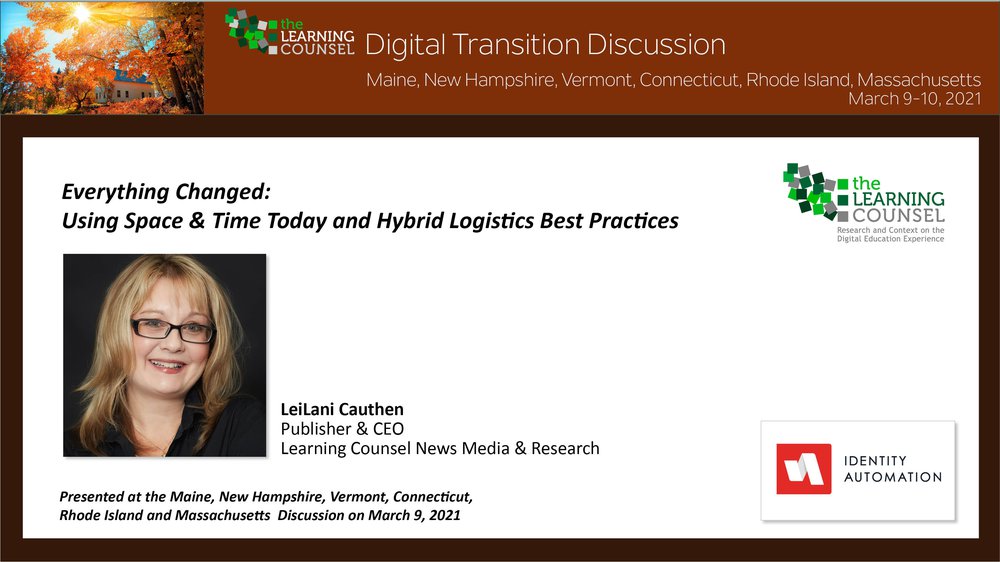According to LeiLani Cauthen, CEO & Publisher, Learning Counsel News Media & Research, “We're in the middle of what we like to call, space and time revision. So I want to take you out of the classroom, up into the administration view of what's really happening in education. I'm going to go over the space side first. Schools have one-way hallways, so that sectioning of buildings and entrances is a common thing. Now it may be common forever because it reduces transmission and the potentiality of infection rate across your campuses. So you may partition buildings. You may also have alternating building use by different subgroups so that you can disinfect overnight. And then a new group comes in and maybe they're Tuesdays and Thursdays one week and then Monday, Wednesday, Friday, another week. And then they alternate with another group. So there's also this idea of house rooms, commons rooms, like Lambertville ISD uses a lot of charters use this because they're smaller.
“So they have a big main room. They call it the house or the commons or the homeroom. And then they only use meeting space for classrooms as needed. So those are sort of scheduled when there's a decision. Okay. Now we go over here and everybody studies asynchronously, so they can be in the building or remote. It won't matter because most of the time, they're in a common space. So there's also the social distancing thing, which is sort of wrecking planning for a lot of schools. Right now. We're hearing this all over the country because you can only have physically so many in the room and you don't have enough rooms. So, some places have decided that their middle schools are going to do that alternating schedule. And the high schools are just going to always be remote, which is kind of wild.
“Then you also have in California, this micro school concept where they're taking over retail space so that they can micro school. In other words, instead of the aggregation movement that we've had for the last 50, 60 years of bigger and bigger high schools, and everybody comes together and they're bussed from further away, instead now it's, dis-aggregating into smaller sort of subset groups. There's also the parents overdevelopment movement where parents may be converting a garage for four or five families, you know, sort of micro school in their garage. And then in terms of time, this is where it gets really wild. We watched in spring, people try to show us, you know, the state level of New York had like six different models, AB days, AB weeks going from a 45-minute Carnegie unit to 120 minutes. But if you're a teacher, you can only use 20 minutes of that.
“120 for video conferencing. The rest has to be asynchronous. So you better align it all up throughout everybody's lesson plans. And then they still didn't know when they were going to open, if at all. And so they were, you know, doing all this weird stuff. So then, so then you also have things like staggered starts, like you can start this week, but not that week. And then this, like I said, altered daily block schedules that are wild. And then you have this last thing which has happened first within subject specific software of auto cohorting and calendaring by pace. That's real hybrid logistics which is the terminology the Learning Counsel came up with. It's also known as the Uberization of learning.”
As you can tell, everything is changing. Watch this exciting and fast-paced look at using space and time in new and different ways. It’s a new look at hybrid logistics, and might just be the very future of education.











